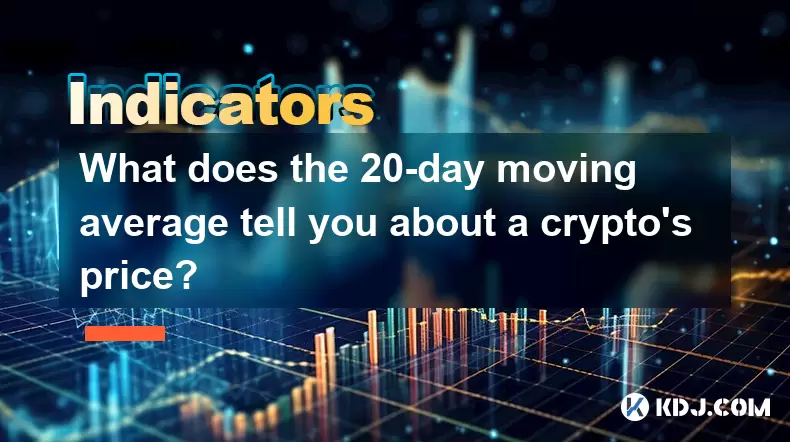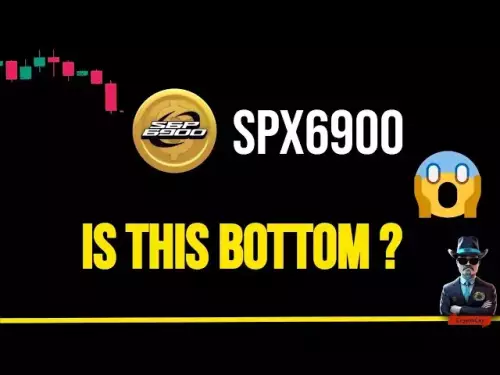-
 Bitcoin
Bitcoin $112600
-2.20% -
 Ethereum
Ethereum $4774
0.35% -
 XRP
XRP $3.032
0.12% -
 Tether USDt
Tether USDt $1.000
0.08% -
 BNB
BNB $867.7
-1.75% -
 Solana
Solana $204.9
0.39% -
 USDC
USDC $1.000
0.01% -
 Dogecoin
Dogecoin $0.2339
-1.38% -
 TRON
TRON $0.3645
0.88% -
 Cardano
Cardano $0.9223
1.03% -
 Chainlink
Chainlink $25.91
-0.85% -
 Hyperliquid
Hyperliquid $45.54
1.73% -
 Sui
Sui $3.698
-0.53% -
 Stellar
Stellar $0.4117
-0.92% -
 Ethena USDe
Ethena USDe $1.001
0.02% -
 Bitcoin Cash
Bitcoin Cash $590.7
0.30% -
 Avalanche
Avalanche $25.74
-0.77% -
 Hedera
Hedera $0.2534
0.31% -
 Litecoin
Litecoin $120.7
-0.20% -
 UNUS SED LEO
UNUS SED LEO $9.580
-0.17% -
 Toncoin
Toncoin $3.331
-1.54% -
 Shiba Inu
Shiba Inu $0.00001303
-2.00% -
 Uniswap
Uniswap $11.09
-2.63% -
 Polkadot
Polkadot $4.131
-2.27% -
 Dai
Dai $1.000
0.01% -
 Aave
Aave $352.2
-0.77% -
 Bitget Token
Bitget Token $4.678
-0.53% -
 Cronos
Cronos $0.1578
0.84% -
 Monero
Monero $279.7
5.32% -
 Ethena
Ethena $0.7000
-6.27%
What does the 20-day moving average tell you about a crypto's price?
The 20-day moving average helps crypto traders identify trends, time entries, and spot reversals by smoothing price data over 20 days.
Aug 10, 2025 at 05:30 pm

Understanding the 20-Day Moving Average in Cryptocurrency Trading
The 20-day moving average (20-DMA) is a widely used technical indicator in the cryptocurrency market that helps traders analyze price trends over a specific period. It calculates the average closing price of a digital asset over the past 20 trading days and plots it as a continuous line on a price chart. This smoothing mechanism filters out short-term price volatility, allowing market participants to better identify the underlying trend direction. When applied to a crypto asset such as Bitcoin or Ethereum, the 20-DMA serves as a dynamic support or resistance level depending on market conditions.
One of the primary insights the 20-DMA provides is whether a cryptocurrency is in an uptrend or downtrend. If the current price is trading above the 20-day moving average, it generally indicates bullish momentum. Conversely, if the price is below this average, it suggests bearish sentiment. Traders use this information to time entries and exits, often waiting for confirmation before making buy or sell decisions.
How the 20-Day Moving Average Is Calculated
To compute the 20-day moving average, you must gather the closing prices of a cryptocurrency for the most recent 20 trading days. The sum of these prices is then divided by 20 to produce the average. This value is updated daily as new data becomes available, with the oldest price dropped and the newest one added. For example:
- Collect the closing prices for the last 20 days.
- Add all 20 values together.
- Divide the total sum by 20.
Most trading platforms, such as Binance, Coinbase Advanced Trade, or TradingView, perform this calculation automatically. On TradingView, you can apply the moving average by clicking the "Indicators" button, searching for "Moving Average," selecting the 20-period Simple Moving Average (SMA), and applying it to the chart. The resulting line will update in real time as new candlesticks form.
Using the 20-DMA to Identify Trend Reversals
A key application of the 20-day moving average is detecting potential trend reversals. One common signal occurs when the price crosses above or below the 20-DMA line. A bullish crossover happens when the price moves from below to above the 20-DMA, suggesting that upward momentum may be building. Traders may interpret this as a potential buying opportunity, especially if confirmed by increasing volume.
Conversely, a bearish crossover occurs when the price falls below the 20-DMA after trading above it. This could signal weakening demand and the start of a downward trend. Some traders combine this signal with other indicators like the Relative Strength Index (RSI) or MACD to reduce false signals. For instance, if the price crosses below the 20-DMA and the RSI is already in oversold territory, the bearish signal may be considered less reliable.
Role of the 20-DMA in Support and Resistance Analysis
In trending markets, the 20-day moving average often acts as a dynamic support level in an uptrend or resistance in a downtrend. During an established bullish phase, traders watch to see if the price pulls back to the 20-DMA and bounces off it. A successful bounce can confirm the strength of the uptrend and present a strategic entry point. The steps to verify this are:
- Confirm the overall trend is upward by analyzing higher highs and higher lows.
- Observe whether the price approaches the 20-DMA during a pullback.
- Check for bullish candlestick patterns (e.g., hammer, bullish engulfing) near the 20-DMA.
- Look for rising trading volume on the bounce to confirm buyer interest.
In a downtrend, the 20-DMA can cap price advances. If the price rises to touch or slightly exceed the 20-DMA but fails to sustain above it, this may indicate continued selling pressure. Traders might use this as a signal to initiate short positions or tighten stop-loss levels on long positions.
Combining the 20-DMA with Other Moving Averages
Many traders enhance the effectiveness of the 20-day moving average by pairing it with longer-term moving averages, such as the 50-day or 200-day MA. One popular strategy involves monitoring for a golden cross or death cross. While these typically involve the 50-DMA and 200-DMA, the 20-DMA can be used in shorter-term variations.
For example, a trader might use a 20/50 DMA crossover system:
- Apply both the 20-day and 50-day moving averages to the price chart.
- When the 20-DMA crosses above the 50-DMA, it generates a short-term buy signal.
- When the 20-DMA crosses below the 50-DMA, it triggers a sell signal.
This method helps filter out noise and focuses on shifts in intermediate-term momentum. It is particularly useful in volatile crypto markets where short-term fluctuations can mislead traders relying on single indicators.
Limitations and Considerations When Using the 20-DMA
While the 20-day moving average is a valuable tool, it has limitations. Because it is based on historical data, it is inherently lagging. Sudden price spikes or news-driven events—such as regulatory announcements or exchange outages—can cause the price to move sharply away from the 20-DMA before the indicator reflects the change. This delay can result in late entries or exits.
Additionally, in sideways or choppy markets, the 20-DMA may produce numerous false signals as the price oscillates above and below the line. To mitigate this, traders often use additional filters such as volume analysis, Bollinger Bands, or moving average convergence divergence (MACD). Adjusting the moving average type—using an Exponential Moving Average (EMA) instead of a Simple Moving Average (SMA)—can also reduce lag, as the EMA gives more weight to recent prices.
Frequently Asked Questions
What is the difference between a 20-day SMA and a 20-day EMA in crypto trading?
The 20-day Simple Moving Average (SMA) assigns equal weight to each of the past 20 closing prices. The 20-day Exponential Moving Average (EMA) places greater importance on recent prices, making it more responsive to new information. In fast-moving crypto markets, the EMA often reacts quicker to price changes, which can be advantageous for short-term traders seeking timely signals.
Can the 20-day moving average be used on timeframes other than daily charts?
Yes, the 20-day moving average can be adapted to other timeframes. On a 4-hour chart, a 20-period MA represents the average of the last 20 four-hour candles, equivalent to roughly 5 days of trading. Traders use this flexibility to align the indicator with their preferred trading style, whether scalping, day trading, or swing trading.
How do I set up the 20-DMA on Binance?
On Binance, open the trading pair chart, click on "Indicators" below the price graph, search for "Moving Average," select the SMA, set the period to 20, and confirm. The line will appear on the chart. You can customize the color and thickness for clarity. To add an EMA, repeat the process but choose "Exponential Moving Average."
Is the 20-day moving average effective for all cryptocurrencies?
The effectiveness of the 20-DMA varies by asset. It tends to work better for high-liquidity cryptos like BTC or ETH, where price movements are less prone to manipulation. For low-cap or low-volume altcoins, the 20-DMA may generate unreliable signals due to erratic price swings and thin order books.
Disclaimer:info@kdj.com
The information provided is not trading advice. kdj.com does not assume any responsibility for any investments made based on the information provided in this article. Cryptocurrencies are highly volatile and it is highly recommended that you invest with caution after thorough research!
If you believe that the content used on this website infringes your copyright, please contact us immediately (info@kdj.com) and we will delete it promptly.
- Rare Find: The 1-Cent Coin Worth €6,000!
- 2025-08-25 02:45:28
- Hacktivism, Tokenization, and the Decentralized Future: A New Yorker's Take
- 2025-08-25 02:45:28
- UNI Price Gears Up for New Cycle: Analyst Outlook Bullish
- 2025-08-25 02:50:11
- BlockchainFX, Polkadot, Stellar: Unveiling 2025's Crypto Opportunities
- 2025-08-25 03:25:27
- Pi Coin Price Patterns: Decoding the Hype and Reality
- 2025-08-25 03:30:12
- Pepe Crypto: Price Predictions and Long-Term Investment Potential - A NYC Perspective
- 2025-08-25 03:05:12
Related knowledge

What does it mean when the +DI and -DI cross frequently in the DMI indicator but the ADX is flattening?
Aug 11,2025 at 03:15am
Understanding the DMI Indicator ComponentsThe Directional Movement Index (DMI) is a technical analysis tool composed of three lines: the +DI (Positive...

What does the sudden appearance of a "dark cloud cover" candlestick pattern during an uptrend indicate?
Aug 13,2025 at 11:35am
Understanding the 'Dark Cloud Cover' Candlestick PatternThe dark cloud cover is a bearish reversal pattern in technical analysis that typically appear...

What does it mean when the moving average, MACD, and RSI all send buy signals simultaneously?
Aug 11,2025 at 01:42pm
Understanding the Convergence of Technical IndicatorsWhen the moving average, MACD, and RSI all generate buy signals at the same time, traders interpr...

What does it mean when both the KDJ indicator and the RSI show overbought signals simultaneously?
Aug 13,2025 at 11:35am
Understanding the KDJ Indicator in Cryptocurrency TradingThe KDJ indicator is a momentum oscillator derived from the Stochastic Oscillator, widely use...

What does it mean when the price is trading above the SAR indicator but the red dots are densely packed?
Aug 09,2025 at 11:49pm
Understanding the SAR Indicator and Its Visual SignalsThe SAR (Parabolic Stop and Reverse) indicator is a technical analysis tool used primarily to de...

What does it mean when the candlestick chart forms a "Morning Star" but trading volume is sluggish?
Aug 12,2025 at 06:28pm
Understanding the Morning Star Candlestick PatternThe Morning Star is a three-candle bullish reversal pattern commonly observed in cryptocurrency pric...

What does it mean when the +DI and -DI cross frequently in the DMI indicator but the ADX is flattening?
Aug 11,2025 at 03:15am
Understanding the DMI Indicator ComponentsThe Directional Movement Index (DMI) is a technical analysis tool composed of three lines: the +DI (Positive...

What does the sudden appearance of a "dark cloud cover" candlestick pattern during an uptrend indicate?
Aug 13,2025 at 11:35am
Understanding the 'Dark Cloud Cover' Candlestick PatternThe dark cloud cover is a bearish reversal pattern in technical analysis that typically appear...

What does it mean when the moving average, MACD, and RSI all send buy signals simultaneously?
Aug 11,2025 at 01:42pm
Understanding the Convergence of Technical IndicatorsWhen the moving average, MACD, and RSI all generate buy signals at the same time, traders interpr...

What does it mean when both the KDJ indicator and the RSI show overbought signals simultaneously?
Aug 13,2025 at 11:35am
Understanding the KDJ Indicator in Cryptocurrency TradingThe KDJ indicator is a momentum oscillator derived from the Stochastic Oscillator, widely use...

What does it mean when the price is trading above the SAR indicator but the red dots are densely packed?
Aug 09,2025 at 11:49pm
Understanding the SAR Indicator and Its Visual SignalsThe SAR (Parabolic Stop and Reverse) indicator is a technical analysis tool used primarily to de...

What does it mean when the candlestick chart forms a "Morning Star" but trading volume is sluggish?
Aug 12,2025 at 06:28pm
Understanding the Morning Star Candlestick PatternThe Morning Star is a three-candle bullish reversal pattern commonly observed in cryptocurrency pric...
See all articles

























































































